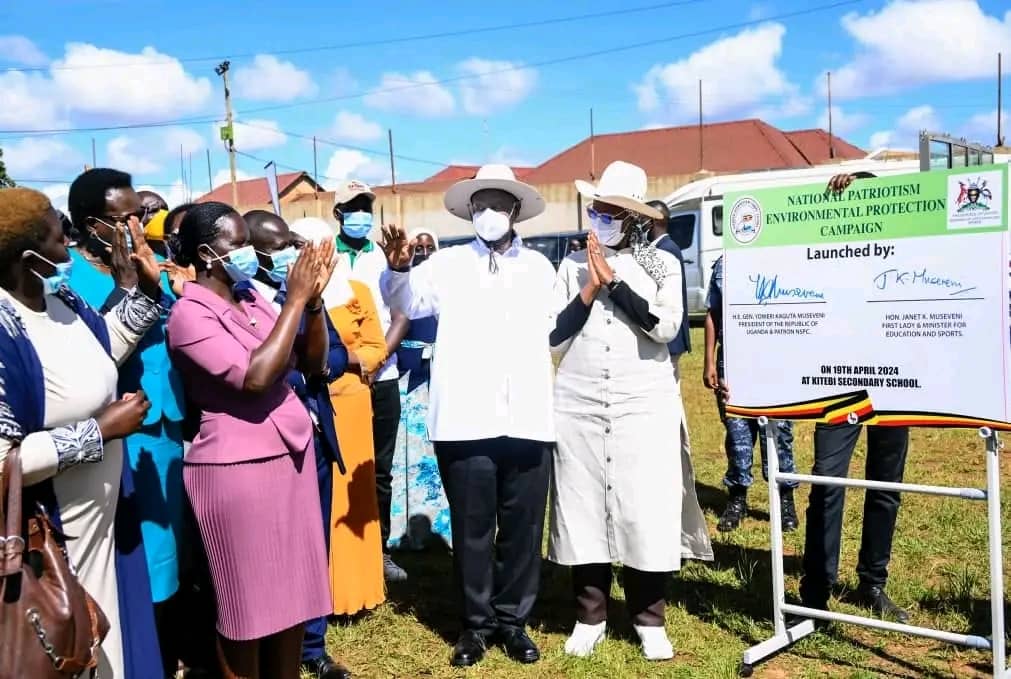Will the ‘Explore Uganda’ campaign revive Uganda’s tourism sector?
Uganda recently launched a new tourism destination brand— Explore Uganda, the pearl of Africa, drawing upon the country's global reputation as one of the most endowed destinations and promising tourists an adventure of a lifetime.
The brand identity was unveiled recently by President Yoweri Museveni in Kampala, Uganda’s capital city. The brand was developed by Uganda Tourism Board (UTB), Uganda’s tourism marketing and regulatory agency.
Keep Reading
The Uganda Tourism Board Chief Executive Officer Lilly Ajarova said: “Uganda is no doubt beautiful. Beautiful beyond measure. Yes, everyone knew that Uganda is and has always been the Pearl of Africa, - but there was a lack of clarity and consistency on, if Uganda is the Pearl of Africa- what pearls does it have to offer for each of the various travel segments and preferences.
“To win the marketplace; to achieve our Number One objective of “Sustainably Promoting Uganda as a Competitive Tourism Destination for Inclusive Development” it was therefore important that all stakeholders are aligned on what makes us the Pearl of Africa and how do we unpack that to the various travel markets/segments around the world.”
“If you think about it, when you invite someone to visit you, you are simply asking them to check on you, maybe for a few days. But an invitation to ‘explore’ is really about inviting someone to indulge themselves. To spoil themselves; to delve into; to deep-dive; to discover and rediscover- the depth, range and variety of attractions in the pearl,” Ajarova explained.
For years, selling Uganda as a destination meant leaning on the region’s most predictable features — the iconic mountain gorillas and probably the Big Five animals including tree climbing lions. As earlier noted, gorilla trekking in Uganda can be done in Bwindi Forest and this is the only destination that a number of tourist come knowing simply meaning that the East African nation’s diverse communities, modern cities, and remote community tourism experiences have remained eclipsed to all but the intrepid explorer.
That narrative has now shifted. In a visible departure from the status quo, Uganda Tourism Board’s new marketing campaign showcases a country with features few outside visitors might expect, and serves as a sign of what’s to come out of African destinations in a post-pandemic competitive tourism industry.
Viewers might glimpse a chimpanzee, a giraffe or a cheetah on the chase, but these make up a tiny part of the footage, otherwise dominated by scenes of Ugandans enjoying a range of outdoor adventures, cultural and urban activities in their own country. The new message is to not just visit Uganda’s sights, but to stay longer and explore its diverse corners beyond the gorillas and the Big 5.
The campaign, released less than a week ago, was launched alongside a rebranding of the destination to “Explore Uganda, The Pearl of Africa.”
“That tourism brand is the result of a very intensive study which took place for a period of time,” said Tom Butime, Uganda’s Minister of Tourism, Wildlife and Antiquities, on a recent local news broadcast, adding that the study revealed tourists stayed longer in Kenya, Tanzania, and Rwanda than they did in Uganda.
Butime said past branding didn’t stand out because of former poorly executed campaigns, and a lack of unity behind the meaning of “Pearl of Africa.
“We also collaborated with some of the market researchers in North America or in Europe, and we know that it is not just wildlife that people are interested in right now,” said Ajarova. “So to be able to position ourselves as a competitive destination, it was important that we highlight the other attractions that we have as well.”
Uganda tourism businesses and veterans in the industry who spoke to Skift shared optimism and positive feedback on the new narrative and branding efforts.
The three-year campaign roll out will prioritize local and regional African markets this year, before going big in international markets in2023.
Africa’s tourism future is also regional
When Covid-19 hit, Uganda’s tourism industry had been growing by at least 20 percent annually for a decade, reaching just over 1.5 million visitors in 2019 and $1.6 billion tourism earnings. Of course that all changed in 2020, when the pandemic set the country back to 2005 with just a third of those visits and a 72.7 percent decline in tourism revenue, according to the Uganda Ministry of Tourism, Wildlife and Antiquities.
“In 2021, we had just over 500,000; we are hoping that we can be able to double last year’s number this this year,” said Uganda Tourism Board’s Ajarova.
Vaccines are on the way and so far the country aims to inoculate the majority of its adult population by the end of the year, Ajarova said.
Meanwhile, the U.S. State Department’s “Reconsider Travel” advisory on Uganda remains in place since the bombings in Kampala in November 2021. But Ajarova said the warning was nothing new.
“Again, it’s the way we are basically viewed, you know, countries on the continent of Africa,” Ajarova said. “But in reality, you know, it is not what is on the grounds. So, we basically have left the responsibility to our diplomatic missions to deal with that.”
The initial local and regional tourism draw has provided a buffer for Uganda’s tourism businesses as more locals and Africans have increasingly taken to exploring their backyards.
According to Mr Begumisa Wilber, an expert in handling gorilla tours under Gorilla Trek Africa Limited, “We’ve been luckier than most, First we started having a trickle of tourists from the region and then international tourists.”
‘The up and down flow of visitors the past 18 months has helped sustain the the company’, he added.
Lemala Camps’ Haigh said that its Uganda property has seen a combination of visitors and record-breaking revenue.
“We’ve made more money in January this year than any year since the property’s been opened,” said Wildwaters Lodge’s Haigh. “And that’s been funded out of a mixture of local and regional, and international tourism.”
Uganda Tourism Board’s Ajarova confirmed the push for involving communities in tourism. “As we pursue the development of different kinds of adventure, communities are going to be massively involved in the new product developments from culture to the adventure activities.”
It’s all part of Uganda tourism’s goal to target slower and immersive exploration and attract the rising number of travelers — domestic, regional and international — who are in search of meaningful experiences.
“I love the challenge of the word ‘explore’ because it is literally challenging people to take a deeper experience of a destination rather than the superficial one,” said Lemala Camps’ Haigh. “That’s what I think that’s what our future is all going to be about.”
Speaking at the launch, President Museveni urged beckoned the world to Explore Uganda, The Pearl of Africa saying that, the uniqueness of her attractions guaranteed a better experience and higher return on investment.
He particularly extolled Uganda’s unique terrain, that made the country a “roof of Africa” where Lake Victoria sits, giving birth to the Mighty River Nile that flows through various Ugandan lakes on its way to Alexandria in Egypt.
He also highlighted points that make Uganda safaris a must try including the abundant vegetation, temperate climate, and variety of wildlife, strategic location on the Equator, cultural diversity, community tourism, peace and security, among others.
He also said, Uganda’s unique place in anthropogenic as the birthplace of humankind should be studied, documented and sold as a tourist attraction.
The rebranding is an essential component of UTB’s Strategic Plan (FY 2020/21 – 2024/25) that seeks to “Sustainably Promote Uganda as a Competitive Tourism Destination for Inclusive Development” with a strategic goal to “sustainably increase the volume and value of tourism in Uganda.”
Under this plan, UTB is pursuing five major objectives that include increasing tourist arrivals, increasing investment and job creation in the tourism sector, increasing the competitiveness of the tourism destination, improving collection and access to tourism information as well as improving internal efficiency and effectiveness.
UTB also aims at recovering from the impact of the pandemic that saw us lose up to USD1 billion in revenue in 2020, reach the pre-pandemic levels of $1.45 billion and grow that further to USD 1.862 billion, recovering the contribution of tourism to total employment at 667,600 people (6.3% of total employment), increasing inbound tourism revenues per visitor from USD1,036 to USD1,500,recovering the average number of international tourist arrivals from the U.S, Europe, Middle East, China and Japan at 225,300 tourists, increasing the proportion of leisure to total tourists from 20.1% to 30% and increasing the number of direct flight routes to Europe and Asia from 6 to 30.













